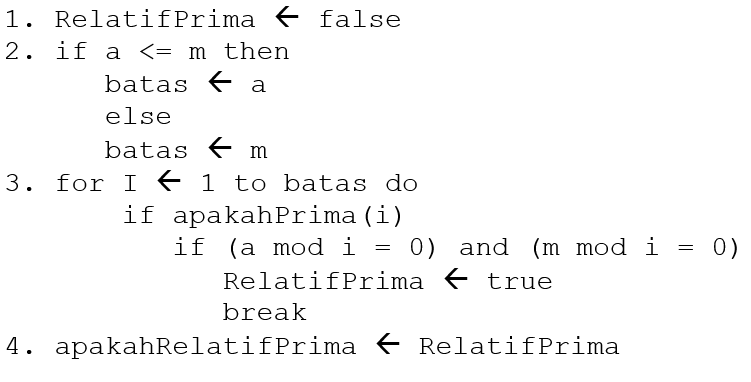Key Matrix Generation Using Random Functions in Hill Cipher Modulo 95 Cryptography
Main Article Content
Abstract
In symmetric cryptography, the confidentiality of the chosen key and the security of its delivery mechanism are paramount to minimize the risk of unauthorized disclosure. Typically, in such systems, the sender and recipient focus primarily on the message (plaintext and ciphertext) rather than the complexities associated with key management. This approach aims to alleviate the burden of selecting a suitable and robust key for communicating parties. This study introduces a Hill Cipher modulo 95 cryptography method employing a matrix-based key, where key generation is achieved through a quantifiable randomization algorithm. The developed 2x2 key matrix facilitates a substantial number of possible keys, specifically 954 (exceeding 81 million). The key matrix generation process incorporates several functions, including those for ASCII character conversion, prime number verification, relative primality checks, modulo arithmetic, inverse modulo computation, determinant calculation, and inverse matrix determination. To simulate the encryption and decryption process, a desktop application was developed using the Lazarus Development IDE version 3.6. The application demonstrates effective generation of the required key matrix.
Article Details
References
[1] Padmaksha Roy, Jaganmohan Chandrasekaran, Erin Lanus, Laura Freeman, and Jeremy Werner. A survey of data security: Practices from cybersecurity and challenges of machine learning. arXiv preprint arXiv:2310.04513, 2023.
[2] Nor Natasha Ashira Shamsudin, Saiful Farik Mat Yatin, Nurul Fadhlin Mohd Nazim, Amie Witiza Talib, Mohammad Afiq Mohamed Sopiee, and Fifi Natasya Shaari. Information security behaviors among employees. International Journal of Academic Research in Business and Social Sciences, 9(6):560–571, 2019.
[3] Hari Purwanto. Penerapan keamanan basis data dengan teknik enkripsi. Jurnal Sistem Informasi Universitas Suryadarma, 1(1):12–25, 2014.
[4] Mulder. Trends in Data Protection and Encryption Technologies. Springer, 2023.
[5] Fajar Sudana Putra and Dony Ariyus. Enkripsi & dekripsi teks menggunakan hill cipher dengan matriks ordo 3 x 3. JURTI (Jurnal Teknologi Informasi), 5(1):17–22, 2021.
[6] H.Touil, N.E.Akkad, andK.Satori. Textencryption: Hybrid cryptographic method using vigenere and hill ciphers. In 2020 International Conference on Intelligent Systems and Computer Vision (ISCV), pages 1–6, 2020.
[7] Wafiqah Yasmin Azhar and Supriyadi. Kriptanalisis hill cipher terhadap known plaintext attack menggunakan metode determinan matriks berbasis android. Jurnal SIMETRIS, 8(2):579–586, 2017.
[8] Rui Xu, Chi Cheng, Yue Qin, and Tao Jiang. Lighting the way to a smart world: Lattice-based cryptography for internet of things. arXiv preprint arXiv:1805.04880, 2018.
[9] Lester S. Hill. Cryptography in an algebraic alphabet. The American Mathematical Monthly, 36(6):306–312, 1929.
[10] Rinaldi Munir. Kriptografi. Penerbit Informatika, Bandung, edisi kedua edition, 2019.
[11] American National Standards Institute. ISO-IR-6: ASCII Graphic Character Set. 1975. Accessed on 29 May 2025.
[12] American National Standards Institute. American National Standard Code for Information Interchange (ASCII) (ANSI X3.4-1968). 1968.
[13] Eric S. Raymond. The Jargon File (version 4.4.8). Accessed on 29 May 2025.
[14] David A. Patterson and John L. Hennessy. Computer Organization and Design: The Hardware/Software Interface. Morgan Kaufmann, fifth edition edition, 2014.
[15] Nikken Prima Puspita and Nurdin Bahtiar. Kriptografi Hill Cipher dengan Menggunakan Operasi Matriks. Jurusan Matematika UNDIP, 2010.
[16] A. Mishra, P. Johri, and A. Mishra. Audio steganography using ascii code and ga. In 2017 International Conference on Infocom Technologies and Unmanned Systems (Trends and Future Directions) (ICTUS), pages 646–651, 2017.
[17] A. Elmogy, Y. Bouteraa, R. Alshabanat, and W. Alghaslan. Anewcryptography algorithm based on ascii code. In 2019 19th International Conference on Sciences and Techniques of Automatic Control and Computer Engineering (STA), pages 626–631, 2019.
[18] S. Guilley and Y. El Housni. Random numbers generation: Tests and attacks. 2018 Workshop on Fault Diagnosis and Tolerance in Cryptography (FDTC), pages 49–54, 2018.
[19] A. Kumar and A. Mishra. Evaluation of cryptographically securepseudorandomnumbergeneratorsforpostquantum era. In 2022 IEEE 7th International Conference for Convergence in Technology (I2CT), pages 1–5, 2022.
[20] M.M. Jacak, P. Jóźwiak, J. Niemczuk, and J.E. Jacak. Quantum generators of random numbers. Scientific Reports, 11(1):16108, 2021.
[21] Y. Oohama. Performance analysis of the interval algorithm for random number generation based on number systems. IEEE Transactions on Information Theory, 57(3):1177–1185, 2011.
[22] Young-Seob Jeong, Kyojoong Oh, Cheol-Koo Cho, and Hyun-Joo Choi. Pseudo random number generation using lstms and irrational numbers. In 2018 IEEE International Conference on Big Data and Smart Computing (BigComp), pages 541–544, 2018.
[23] R.H. Sianipar. Java untuk Kriptografi. Penerbit Andi, Yogyakarta, 2017.
[24] E. Setyaningsih. Kriptografi dan Implementasinya Menggunakan MATLAB. Penerbit Andi, Yogyakarta, 2015.
[25] Free Pascal Team. Free Pascal Language Reference Guide. Accessed on 29 May 2025.

